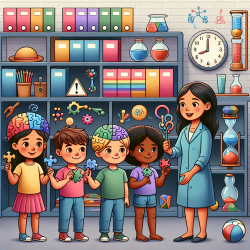Introduction
In the realm of special education, understanding the unique challenges faced by immigrant children is crucial. A recent study titled "Health related quality of life of immigrant children: towards a new pattern in Germany?" offers insights that can enhance the skills of practitioners working with this demographic. This blog aims to explore the study's findings and provide actionable steps for practitioners to improve the health-related quality of life (HRQoL) of immigrant children.
Understanding the Study
The study conducted in Germany focused on kindergarten children aged 3 to 5 years, predominantly from immigrant backgrounds. It measured HRQoL using the Kiddy-KINDL instrument and examined socio-demographic variables, positive development, resilience, and socio-emotional and motor development. The findings revealed that immigrant children reported slightly higher HRQoL compared to native-born children, despite having lower socio-economic status.
Key Findings and Implications
- Higher Perceived Health: Immigrant children reported slightly better perceived health than their native-born counterparts. This suggests a potential "migrant health paradox" where immigrants, despite socio-economic disadvantages, exhibit better health outcomes.
- Socio-Economic Challenges: The study highlighted significant socio-economic disparities between immigrant and native-born children. Practitioners should be aware of these challenges and work towards providing support that addresses these disparities.
- Gender Differences: Girls reported higher HRQoL compared to boys, especially among native-born children. This gender difference should be considered when developing interventions.
Actionable Steps for Practitioners
Practitioners can enhance their skills and improve outcomes for immigrant children by implementing the following strategies:
- Foster Resilience: Encourage activities that build resilience and positive development. Utilize tools like the PERIK instrument to assess and support children's socio-emotional well-being.
- Address Socio-Economic Barriers: Collaborate with community resources to provide support for families facing socio-economic challenges. This can include access to nutrition, healthcare, and educational resources.
- Promote Inclusive Environments: Create inclusive classroom settings that celebrate diversity and provide a sense of belonging for all students, particularly those from immigrant backgrounds.
- Gender-Sensitive Approaches: Develop interventions that are sensitive to gender differences in HRQoL, ensuring that both boys and girls receive appropriate support.
Encouraging Further Research
While this study provides valuable insights, it also highlights the need for further research. Practitioners are encouraged to engage in or support research efforts that explore the life course trajectory of HRQoL among immigrant children. Such research can inform more effective interventions and policies.
To read the original research paper, please follow this link: Health related quality of life of immigrant children: towards a new pattern in Germany?










